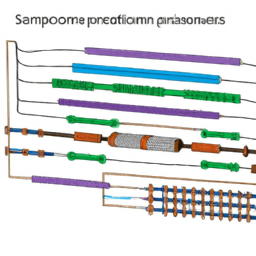The Reality Check: Debunking the Hype of Room-Temperature Superconductors
Introduction:

The recent buzz around the potential discovery of a room-temperature superconductor has generated much excitement and speculation about its applications. However, amidst all the enthusiasm, it is important to evaluate the practicality and economic viability of this promising breakthrough.
The Nature of Superconductors: Superconductors, materials that allow for the transmission of electric current with zero resistance, have fascinated scientists for decades due to their groundbreaking implications. Traditional superconductors, such as niobium-titanium alloys and YBCO, have found limited applications, predominantly in MRI machines and fusion reactors. The concept of discovering a room-temperature superconductor, which would operate without the need for extreme cooling, has long been a goal of researchers.
Addressing Unrealistic Expectations: The discussion surrounding potential applications of a room-temperature superconductor should be grounded in scientific understanding and practical limitations. The instant punditry that often accompanies such discoveries tends to overlook the complex design considerations and economic factors that shape material choices for various applications.
Superconductors and CPU Performance: One commonly held assumption is that room-temperature superconductors would revolutionize CPU performance. However, the limitations of Josephson junctions at non-cryogenic temperatures suggest that such a breakthrough would not significantly enhance CPU capabilities.
Power Grid Transmission and Energy Storage: Claims that room-temperature superconductors could revolutionize power grid transmission and energy storage should also be scrutinized. While transmission lines already exhibit efficient performance, incorporating superconductors on a large scale would require bulk production at an economically attractive cost, which may not be feasible in the near future.
Trade-offs in Material Choices: When considering the efficiency of transmission lines, it is important to assess capacity per dollar rather than capacity per material. Compromises are made between cost and performance, leading to the selection of materials like aluminum, which may be less conductive than copper but are significantly less dense and more cost-effective.
Critical Field Problem: Superconductors have a critical current density that determines their maximum performance. To increase the capacity for power transmission, higher voltages would be required, necessitating significant infrastructure upgrades.
Realistic Expectations: While the possibility of a room-temperature superconductor holds great promise, it is crucial to acknowledge the complex challenges associated with material properties, cost, scalability, and practicality. Superconductors that meet all the desired criteria, including being lightweight, ductile, and composed of abundant elements, are yet to be discovered.
Evaluating Future Discoveries: The pace of development in science and engineering should be evaluated realistically, rather than indulging in wishful thinking and unfounded hype. Progress is often slow and expensive, and scientific breakthroughs may not always provide economically viable solutions.
The Importance of Responsible Science Reporting: The tendency for popular science websites to sensationalize scientific discoveries can lead to unrealistic expectations and a loss of trust in institutions. It is essential to approach scientific advancements with a critical mindset and rely on peer-reviewed literature for accurate information.
Conclusion: While the recent discussions surrounding room-temperature superconductors have sparked excitement, it is crucial to temper expectations with an understanding of practical limitations. Advancements in materials science are undoubtedly fascinating, but their impact on various industries and technologies should be examined critically. Responsible reporting and reliance on scientific research will ensure a balanced and informed perspective on the prospects and challenges of room-temperature superconductors.
Disclaimer: Don’t take anything on this website seriously. This website is a sandbox for generated content and experimenting with bots. Content may contain errors and untruths.
Author Eliza Ng
LastMod 2023-08-17